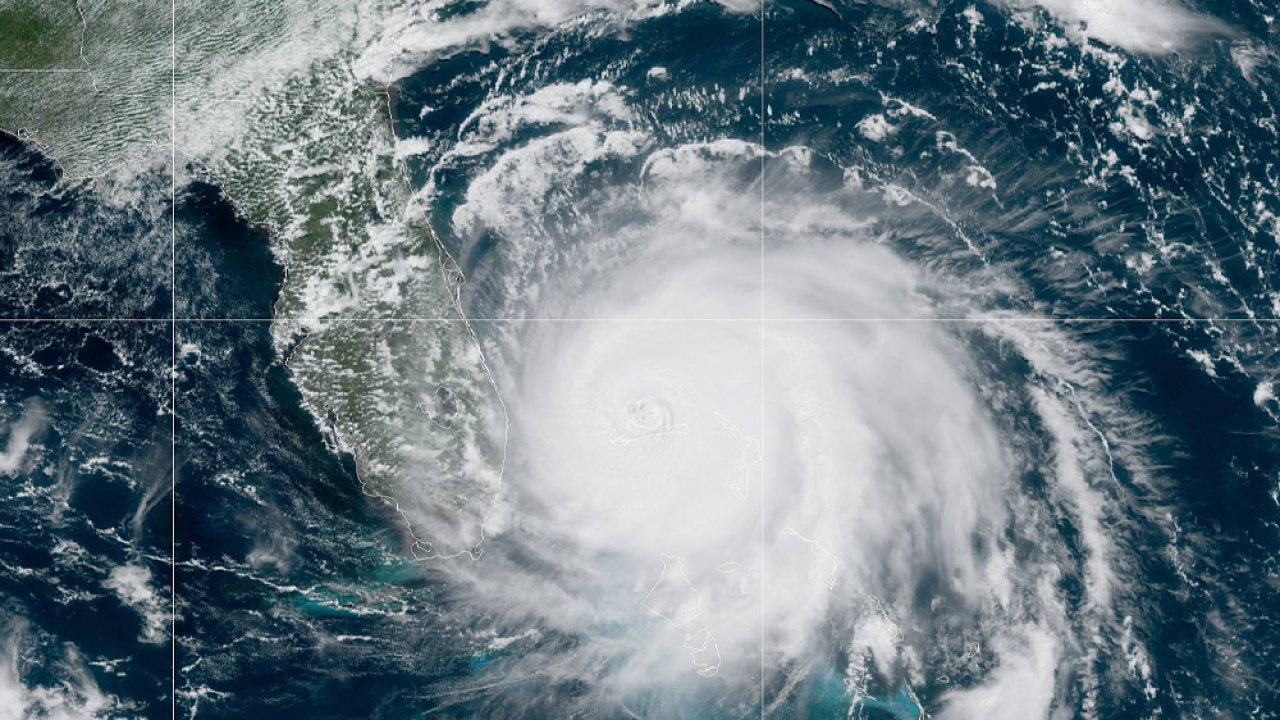TAMPA, Fla. — The 2021 hurricane season has been underway since June 1. Emergency officials want residents to make sure they're prepared well before a storm hits.
RECOMMENDED: Researchers predict above-average 2021 Atlantic hurricane season
Hurricane Resources
Supply Kits
Having an up-to-date hurricane supply kit is one of the most important things to do before a storm, and you can never be too prepared.
Floridians are encouraged to have at least seven days of supplies but a basic kit should include the following.
- Water — enough for one gallon per person, per day for at least three days
- Food — at least a three day supply of non-perishable food for you and your pets
- Diapers, formula, bottles and wipes for your baby
- A battery-powered or hand-crank radio
- A flashlight and extra batteries
- A cellphone with chargers and a backup or external battery
- A whistle to signal for help
- A first aid kit
- Garbage bags
- Moist towelettes for personal sanitation
It's also helpful to have local maps, a manual can opener, enough prescription medicine to last a few days, matches, a sleeping bag, blankets, important family documents, local maps and a wrench or pliers to turn off utilities.
Pets
The first and most important thing to remember — never leave your pets behind if you evacuate. If it isn't safe for you, it isn't safe for them.
Make sure your pets have collars and tags with the most up-to-date information. That should include their name, your phone number and any urgent medical needs the pet may have.
Create an emergency kit for your pets that includes three to seven days' worth of food, feeding dishes and water bowls, an extra collar or leash, disposable litter trays and garbage bags, any medication they take, a pet first aid kit and toys.
If for some reason you can't take your pet with you, have a plan in place. Call shelters or kennels in advance, or have a friend on stand-by who can look after them.
Evacuation
Before you evacuate make sure you know a few things.
- Know your evacuation zone
- Pay attention to storm advisories, tune into the news so you know if you need to evacuate
- Know where to go if you do have to evacuate
- Have your hurricane and emergency kits ready
- Make sure you have a full tank of gas
- Plan to take one car per family to reduce traffic
- Be familiar with alternate routes and means of transportation out of your area
- Have cash handy because banks might be temporarily closed
- Leave early enough to avoid being trapped by severe weather
- Make sure it's safe to come back home before you return
Resources to bookmark
- Emergency phone numbers and applications. Click here for a full breakdown by county.
- Where to check power outages based on your provider. Click here for maps and phone numbers.
Terms to know
- Tropical Storm Watch
- A Tropical Storm Watch is issued when Tropical Storm conditions, including winds of 39-73 mph, pose a POSSIBLE threat to a specified coastal area within 48 hours.
- Tropical Storm Warning
- A Tropical Storm Warning is issued when Tropical Storm conditions, including winds of 39-73 mph, are EXPECTED in a specified coastal area within 36 hours or less.
- Hurricane Watch
- A Hurricane Watch is issued when sustained winds of 74 mph or higher are POSSIBLE within the specified area of the Watch. Because hurricane preparedness activities become difficult once winds reach tropical storm force, the Watch is issued 48 hours in advance of the onset of tropical-storm-force winds.
- Hurricane Warning
- A Hurricane Warning is issued when sustained winds of 74 mph or higher are EXPECTED somewhere within the specified area of the Warning. Because hurricane preparedness activities become difficult once winds reach tropical storm force, the Warning is issued 36 hours in advance of the onset of tropical-storm-force winds.
Saffir-Simpson Hurricane Wind Scale
- Category 1
- Sustained winds: 74-95 mph
- Very dangerous winds will produce some damage
- Category 2
- Sustained winds: 96-110 mph
- Extremely dangerous winds will cause extensive damage
- Category 3 (considered a major storm)
- Sustained winds: 111-129 mph
- Devastating damage will occur
- Category 4 (considered a major storm)
- Sustained winds: 130-156 mph
- Catastrophic damage will occur
- Category 5 (considered a major storm)
- Sustained winds: 157 mph or higher
- Catastrophic damage will occur

